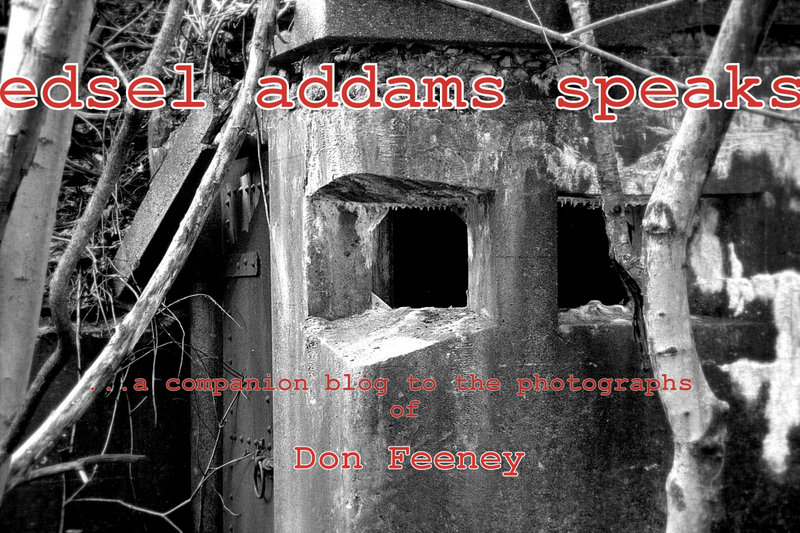Discovery
Back in 2011, on dull grey October morning I traveled to one of my favorite locations, Fort Wetherill in Jamestown, Rhode Island. There was something strangely detached about the way I was feeling as I tried get beyond the normal perception of reality and immerse myself in the timeless flow of history and quietly hostile nature that coursed through the derelict defenses. My first destination was Battery Varnum which I had visited numerous times since I first came upon the imposing concrete coast artillery emplacement that I initially referred to as "Cosmoliner* Heaven" a few years before. It stands alone separate from the sprawling main gun line of the rest of the fort on a distinctively shaped formation once known as "The Dumpling" for its compact mound-like appearance. It had been the fortified in one fashion or another dating back to pre-Revolutionary times as it was advantageously situated over the entrance to Newport Harbor. The existing battery was the first to be completed of the Endicott-Taft period reinforced concrete batteries that stretch across the 100 foot high cliffs overlooking the harbor.
Generally I make a point of "clearing the building" making sure to check all the rooms for the presence of anything (or anyone) unexpected. On this occasion however I became complacent since my surroundings were so familiar. I eschewed my standard operating procedure and ignored the usual search. As I ventured down the long shadowy corridor that spans the battery I half stumbled across an unanticipated protrusion in the floor. When I shined my flashlight on the object I tripped over I was stunned to see that it was the body of an opossum. I noticed further that it appeared to have been the victim of some sort of attack as there were numerous stab wounds in the unfortunate creature's abdomen. A fairly fresh trail of blood led to one of the magazine rooms off to the side of the main corridor. At the end of the blood trail was a sizable puddle of blood with a fish scaling knife lying nearby. This heinous act had not occurred all that long before my arrival, possibly as recently as the night before. It was a shocking revelation that snapped me out of my lackadaisical state. I immediately assumed a full defensive posture and cautiously inspected the entire battery, checking each blackened magazine thoroughly to make sure the perpetrator was not still lurking about somewhere. After making this grisly discovery I stepped outside into the deserted alleyway that separates the ordinance rooms from what had been the power plant and plotting rooms of the battery complex to gather my thoughts.
The only sound in the vacant alley was that of a white plastic bag fluttering like a flag of surrender as it was entangled in the overgrown shell absorbing earthworks covering the roofs of the structure. I felt like I had been selected to be a solitary witness and that as disturbing as my find had been my first obligation was to go back in order to document what I had literally stumbled upon to somehow provide some context. It was, after all, an element of the unconventional narrative that I was a part of that day and not unlike that which I had experienced throughout my explorations of the Coast Artillery positions. There was a cold-blooded viciousness to the act that repelled me while at the same time compelled me to confront and somehow rationalize it in relation to that tale of endless war and indifferent nature. I went back and shot the video posted above seeing it as a curiously juxtaposed extension of a scene I had shot that summer in a bunker at Fort Standish in Boston Harbor. In that video the unseen narrator leads the viewer on a tour of a long abandoned bunker to the darkened ammo room where he indicates the saga of his tragic wartime experiences began. When I emerged from shooting the current scene of the crime a flock of hundreds of birds swooped and swirled over the battery almost as if the madness of the moment had possessed them and driven them to a squawking mass frenzy.
Later in the same day I journeyed over to Fort Adams across the channel in Newport. I was disappointed to find that all of the gun positions had been sealed to the public, but I did come across what had been the fort's cemetery. As I wandered among the ancient headstones of soldiers who died from maladies and fevers while posted at the fort the headstones shifted unexpectedly from those of fallen warriors to those of babies. They were the soldiers' offspring who had succumbed to the high rates of infant mortality that plagued the world of the 19th and early 20th centuries. Under the inscrutable gaze of a bronze bust of John Adams, who had once described his namesake fortress as "the rock against which the storm shall break", row after row of grave markers simply proclaimed "Baby", "Baby"...
And so went my expedition into the greyness of one October day in the murky shadows of history.
*Cosmoliner was term for Coast Artillery Corps soldiers as they were constantly covered with the petroleum gel, cosmoline that was used to rust proof the guns they serviced.
